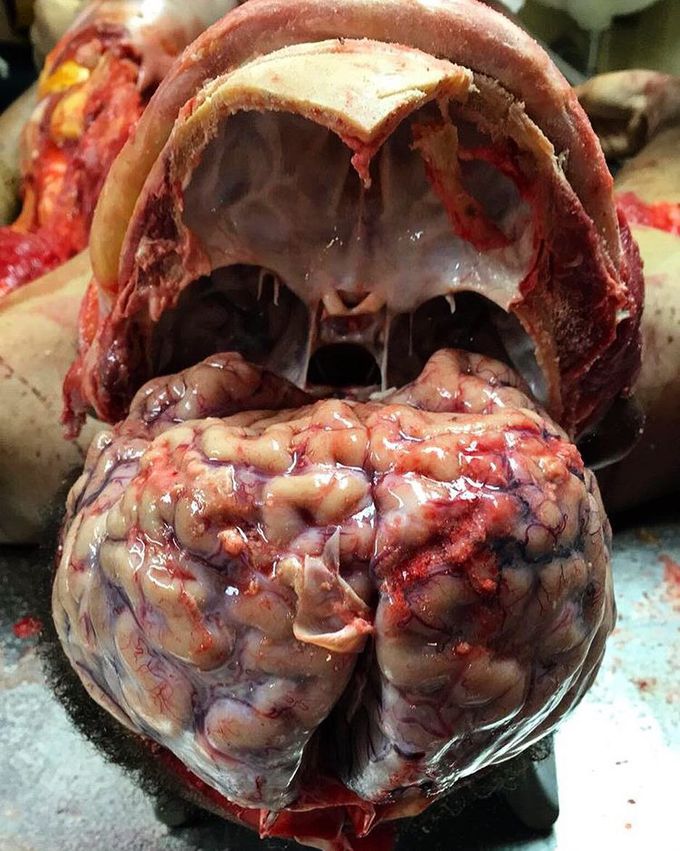


Post-mortem examination showing the skull open for a fresh brain autopsy
The importance of the autopsy in neurodegenerative disease is often not appreciated. Yet clinical diagnosis of neurodegenerative disease is relatively inaccurate, many are inherited or are associated with specific genetic risk factors, and several non-transmissible neurodegenerative diseases may be confused clinically with prion diseases. In all these cases, the autopsy is the only practical way in which brain tissue can be obtained for diagnosis. Brain autopsies has also significant importance in patients with traumatic brain injury. To remove the brain, an incision is made in the back of the skull from one ear to the other. The scalp is cut and separated from the underlying skull and pulled forward. The top of the skull is removed using a vibrating saw. The entire brain is then gently lifted out of the cranial vault. The spinal cord may also be taken by removing the anterior or posterior portion of the spinal column.Photo by @18_double_d

